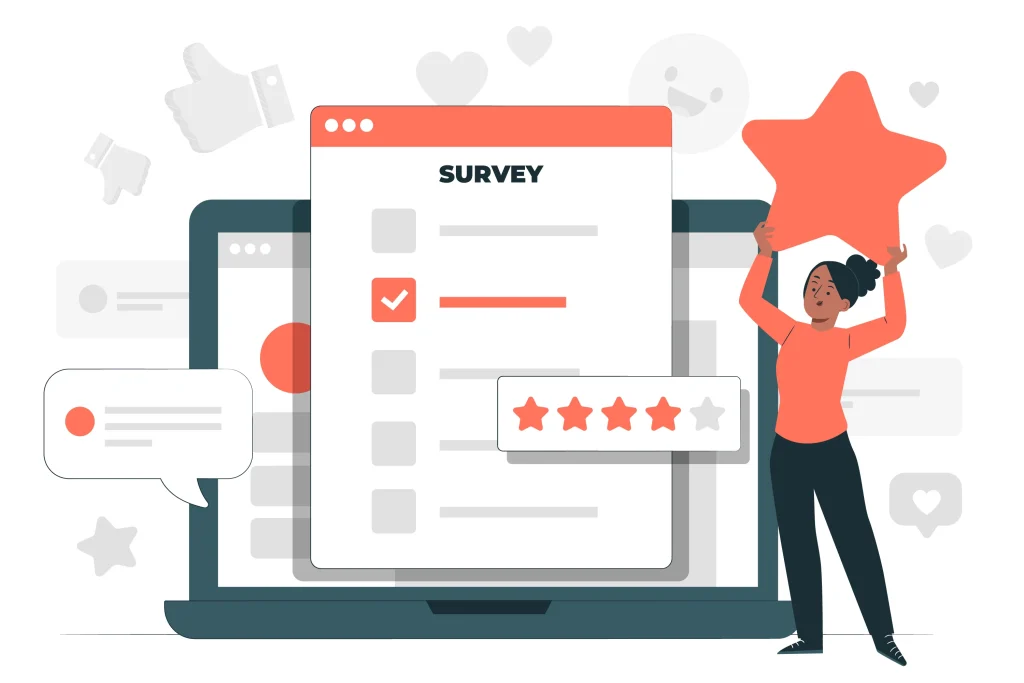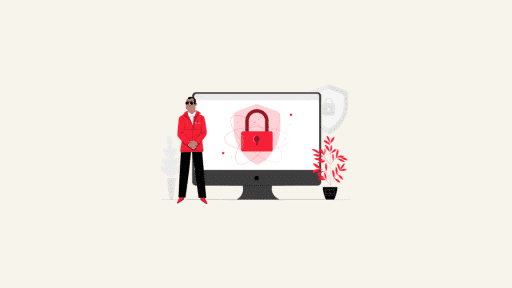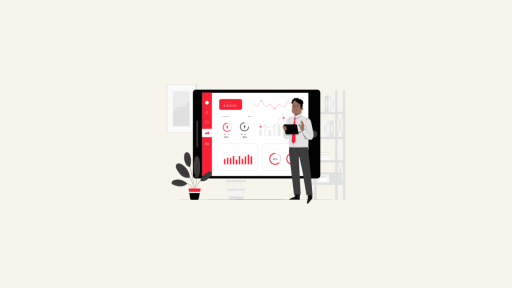
In the contemporary work landscape, where technological advancements continually reshape how we operate, integrating personal devices into the workplace has become a defining feature of organizational dynamics. As employees seamlessly bridge the gap between personal and professional spheres through their smartphones, tablets, and laptops, Human Resources (HR) professionals find themselves at the forefront of managing this transformative shift. This comprehensive guide aims to provide HR professionals with a roadmap to navigate the complexities of personal device usage in the workplace, offering insights, strategies, and best practices to strike a delicate balance between productivity, security, and employee satisfaction.
The evolution of the Bring Your Device (BYOD) culture introduces many opportunities for enhanced flexibility, collaboration, and efficiency. However, it also presents challenges related to data security, privacy concerns, and the need for clear policies to govern responsible device usage. This guide explores each facet of this multifaceted landscape, empowering HR professionals to craft effective policies, implement robust security measures, and foster a work environment where personal and professional realms coexist harmoniously.
As we embark on this comprehensive journey, we will delve into embracing the BYOD culture, crafting policies that stand the test of evolving technologies, ensuring security measures and data protection, and striking a balance between work and personal life. We will explore the crucial role of employee training, address the complexities of monitoring and compliance, and discuss the technological integration necessary to incorporate personal devices into the workplace seamlessly. This guide culminates with insights into the evolution of workplace policies, strategies for continuous improvement, and the importance of actively seeking and incorporating employee feedback.
Embracing the BYOD (Bring Your Own Device) Culture
The proliferation of personal devices in the workplace has ushered in a new era of flexibility and connectivity. Embracing the BYOD (Bring Your Own Device) culture allows employees to seamlessly integrate their personal smartphones, tablets, and laptops into the professional environment. This section explores the benefits and challenges of this cultural shift, aiming to provide HR professionals with valuable insights into harnessing the advantages while mitigating potential pitfalls.
In the contemporary workplace, where remote and flexible working arrangements are increasingly common, the BYOD culture empowers employees to work efficiently from various locations, fostering collaboration and enhancing productivity. However, as this trend gains momentum, organizations must grapple with concerns such as data security, privacy, and the need for clear policies to govern the responsible use of personal devices.
Key Points:
- Flexibility and Collaboration: The BYOD culture promotes flexibility by allowing employees to work on familiar devices, thereby minimizing the learning curve associated with company-provided equipment. This leads to increased collaboration, as employees can seamlessly transition between personal and professional tasks.
- Productivity Boost: Employees often find their personal devices more intuitive and efficient, contributing to enhanced productivity. Familiarity with one’s own device reduces downtime associated with adapting to new technology, allowing employees to focus on their tasks more effectively.
- Challenges and Concerns: Despite the benefits, challenges arise, including data security, compatibility issues, and the potential blurring of personal and professional boundaries. HR professionals play a crucial role in navigating these challenges and establishing guidelines that strike a balance between organizational needs and employee preferences.
Embracing the BYOD culture is not merely about accommodating personal devices in the workplace but rather harnessing the advantages while mitigating potential risks. As organizations tread this path, HR professionals must recognize the evolving nature of work and adapt policies that foster a collaborative, flexible, and secure environment. Striking this balance ensures that employees can leverage their personal devices for optimal productivity while safeguarding organizational interests.

Crafting Robust BYOD Policies
As organizations embrace the BYOD (Bring Your Own Device) culture, the need for well-defined and robust policies becomes paramount. Crafting effective policies is a cornerstone in ensuring a harmonious integration of personal devices into the workplace. This section delves into the intricacies of developing comprehensive BYOD policies, providing HR professionals with a step-by-step guide to address security measures, acceptable use, data protection, and privacy considerations.
Without clear guidelines, organizations risk exposing themselves to potential security breaches, legal challenges, and issues related to employee conduct. Robust BYOD policies serve as a roadmap, establishing expectations and boundaries while empowering employees to leverage the benefits of using their personal devices within the professional sphere.
Key Points:
- Security Measures: The foundation of any BYOD policy lies in robust security measures. Policies should address encryption standards, secure network protocols, and mechanisms for remote data wiping in case of device loss or theft. This section explores how HR professionals can collaborate with IT departments to implement effective security protocols.
- Acceptable Use Guidelines: Defining acceptable use is crucial to avoid misuse of personal devices for non-work-related activities during working hours. Policies should articulate the boundaries, specifying the types of applications and websites that are permissible and those that are restricted.
- Data Protection and Privacy: BYOD policies must address data protection and privacy concerns. This includes outlining how sensitive company data is handled on personal devices, ensuring compliance with data protection regulations, and clearly communicating the organization’s stance on privacy expectations.
- Legal Compliance: Aligning BYOD policies with local and international legal frameworks is imperative. HR professionals need to stay informed about evolving laws and regulations related to data privacy, employee rights, and electronic communications to ensure compliance and mitigate legal risks.
Crafting robust BYOD policies is a proactive measure that safeguards both the organization and its employees. As the workplace landscape continues to evolve, these policies provide a framework for responsible device usage, promoting a secure and productive work environment. In the subsequent sections of this guide, we will delve into specific aspects of security measures, balancing work and personal life, and employee training to further enhance the effectiveness of BYOD policies.

Security Measures and Data Protection
With the integration of personal devices in the workplace comes the imperative to establish robust security measures and stringent data protection protocols. This section delves into the critical aspects of securing sensitive corporate information, addressing potential vulnerabilities, and ensuring that personal devices do not compromise the integrity of the organization’s data. HR professionals play a pivotal role in collaborating with IT teams to implement effective security measures that safeguard both employee privacy and company interests.
Key Points:
- Encryption Standards: Implementing strong encryption standards is fundamental to protecting data on personal devices. This section explores the various encryption methods available and emphasizes the importance of encrypting both data at rest and data in transit to mitigate the risk of unauthorized access.
- Secure Network Protocols: The use of personal devices necessitates secure network protocols to prevent unauthorized access and data interception. HR professionals need to work closely with IT departments to ensure that personal devices connecting to company networks adhere to established security protocols, such as Virtual Private Network (VPN) usage.
- Remote Data Wiping: In the event of a lost or stolen device, the ability to remotely wipe sensitive data is crucial. This section discusses the implementation of remote data wiping solutions and emphasizes the importance of clearly communicating this capability to employees to enhance data security.
- Employee Education on Cybersecurity: Human error remains a significant factor in cybersecurity breaches. HR professionals should actively engage in employee education initiatives, promoting awareness of phishing attacks, social engineering tactics, and other common cyber threats. Educated employees serve as an additional line of defense against potential security breaches.
Security measures and data protection are the cornerstones of a successful BYOD implementation. As personal devices become integral to daily work routines, HR professionals must collaborate with IT teams to establish a robust defense against potential threats. Implementing encryption standards, secure network protocols, remote data wiping capabilities, and ongoing employee education ensures that the organization’s data remains secure, allowing employees to harness the benefits of personal devices without compromising the confidentiality and integrity of sensitive information.

Balancing Work and Personal Life
Integrating personal devices in the workplace has revolutionized how we work, offering flexibility and convenience. However, this increased connectivity has also raised concerns about the potential blurring of boundaries between work and personal life. A harmonious balance prevents burnout, maintains employee well-being, and ensures sustained productivity. In this section, we explore strategies for striking the right balance between work and personal life in the context of the BYOD culture.
Key Points:
- Flexible Work Hours: Providing employees with the flexibility to set their work hours within certain limits can contribute to a healthier work-life balance. HR professionals can work with managers and teams to establish clear expectations regarding availability while respecting individual preferences for when and how work is conducted.
- Encouraging Breaks: Continuous connectivity can lead to a constant stream of work-related communication, potentially encroaching on personal time. Encouraging employees to take regular breaks, step away from their devices, and recharge is vital for mental well-being and sustained productivity.
- Clear Communication Channels: Establishing clear communication channels regarding expectations for after-hours work and response times is essential. HR policies should articulate guidelines for non-urgent communication outside regular working hours to respect employees’ personal time.
- Promoting a Healthy Work Culture: A positive work culture that values and promotes well-being is crucial. HR professionals can champion initiatives such as wellness programs, mental health support, and stress management workshops to create a workplace that prioritizes employee health.
Balancing work and personal life in the BYOD era requires a thoughtful and proactive approach from HR professionals. By implementing flexible work hours, encouraging breaks, fostering clear communication channels, and promoting a healthy work culture, organizations can create an environment where employees feel supported in managing their personal and professional responsibilities. As we continue through this comprehensive guide, we will delve into employee training and support, technological integration, and the evolution of workplace policies to further enhance the BYOD experience while maintaining a healthy work-life equilibrium.

Employee Training and Support
Successful integration of personal devices in the workplace relies not only on robust policies and security measures but also on empowering employees with the knowledge and skills to navigate this technological landscape responsibly. In this section, we explore the critical role of employee training and support in ensuring a seamless and secure BYOD experience. HR professionals are central in providing the necessary resources and guidance for employees to make informed decisions and contribute to a positive and secure work environment.
Key Points:
- Orientation and Onboarding: Initiating employees into the BYOD culture should begin during the orientation and onboarding. This includes providing comprehensive information on company policies, acceptable use guidelines, and security measures related to personal device usage.
- Workshops and Webinars: Conducting workshops and webinars on cybersecurity best practices, data protection, and responsible device usage is essential. These sessions can be tailored to address specific challenges associated with personal devices, offering practical insights and tips for employees.
- Readily Accessible Resources: Creating easily accessible resources, such as online guides, FAQs, and instructional videos, ensures that employees can refer to relevant information whenever needed. HR professionals can collaborate with IT teams to establish a centralized resource repository.
- Helpdesk and Support Channels: Establishing a dedicated helpdesk and support channels for BYOD-related queries and technical issues is crucial. HR professionals can work with IT support to ensure that employees receive prompt assistance, fostering a positive user experience.
Employee training and support are integral components of a successful BYOD implementation. In collaboration with IT teams, HR professionals can empower employees with the knowledge and tools to navigate the use of personal devices responsibly. By integrating training into the onboarding process, conducting informative workshops, providing readily accessible resources, and establishing efficient support channels, organizations can ensure that employees feel confident and supported in leveraging the benefits of personal devices for work purposes. As we progress through this guide, we will further explore the evolution of workplace policies, monitoring and compliance, and technological integration to enhance the BYOD experience in the workplace.

Monitoring and Compliance
The integration of personal devices in the workplace requires organizations to strike a delicate balance between ensuring productivity and respecting employee privacy. Monitoring employee activities on personal devices is critical to maintaining a secure and compliant work environment. In this section, we explore the nuances of monitoring and compliance, emphasizing the importance of transparent policies and adherence to legal standards. HR professionals must navigate this terrain carefully to foster trust and uphold organizational and employee interests.
Key Points:
- Transparent Monitoring Policies: Establishing clear and transparent monitoring policies is crucial for building trust within the workforce. HR professionals should collaborate with legal and IT teams to define the scope of monitoring, articulate the purposes, and communicate the procedures to employees.
- Legal Compliance: Adhering to local and international legal frameworks is paramount. Monitoring practices must align with applicable data protection and privacy laws. HR professionals should stay informed about evolving regulations to ensure that the organization’s monitoring activities remain within legal boundaries.
- Balancing Productivity and Privacy: Striking a balance between monitoring for productivity and respecting employee privacy is essential. Policies should articulate the types of activities that may be monitored, such as network usage and access to sensitive data, while ensuring that personal communication and activities remain private.
- Employee Consent and Communication: Seeking employee consent for monitoring activities and maintaining open communication about the reasons behind monitoring efforts are critical. This helps in fostering a culture of transparency and ensures that employees understand the purpose and benefits of monitoring for both their and the organization’s interests.
Monitoring and compliance in personal device usage require a thoughtful and transparent approach. In collaboration with legal and IT teams, HR professionals play a pivotal role in establishing policies that strike the right balance between productivity and privacy. By ensuring legal compliance, transparent communication, and respecting employee consent, organizations can create a monitoring framework that safeguards both the company’s interests and the privacy of its workforce.

Technological Integration and Support
The successful integration of personal devices in the workplace requires a seamless and supportive technological infrastructure. HR professionals must collaborate with IT teams to ensure that personal devices can be effectively incorporated into the organization’s systems. This section explores technological integration strategies, including using Mobile Device Management (MDM) systems and providing adequate IT support. By fostering a technologically integrated environment, organizations can enhance the efficiency and security of personal device usage among employees.
Key Points:
- Mobile Device Management (MDM) Systems: Implementing MDM systems is a cornerstone of effective technological integration. These systems enable organizations to manage and secure personal devices by enforcing policies, monitoring compliance, and facilitating remote troubleshooting. HR professionals should work closely with IT teams to select and deploy MDM solutions tailored to the organization’s needs.
- Device Compatibility: Addressing device compatibility issues is crucial to ensure a smooth integration process. HR professionals should collaborate with IT to develop guidelines for supported devices, operating systems, and applications. This ensures that employees can leverage the benefits of personal devices without hindrance.
- Adequate IT Support: Providing robust IT support is essential to address technical issues promptly. HR professionals should work with IT teams to establish support channels, including helpdesks and ticketing systems. Ensuring that employees have access to timely assistance fosters a positive user experience and prevents disruptions in productivity.
- Continuous Technological Improvement: The technological landscape is dynamic, and continuous improvement is necessary. HR professionals should actively participate in the evaluation of new technologies, updates to existing systems, and the implementation of emerging solutions. This ensures that the organization stays at the forefront of technological advancements, providing employees with the tools they need for optimal performance.
Technological integration and support are critical components of a successful BYOD implementation. In collaboration with IT teams, HR professionals must ensure that personal devices seamlessly align with the organization’s infrastructure. Implementing MDM systems, addressing compatibility issues, providing adequate IT support, and fostering a culture of continuous technological improvement contribute to a positive and efficient environment for personal device usage.

Evolution of Workplace Policies
In the dynamic landscape of technology and work practices, workplace policies must be adaptable to remain relevant and effective. This section delves into the importance of evolving workplace policies in the context of the BYOD culture. HR professionals regularly review and update policies to align with emerging technologies, industry trends, and organizational needs. Embracing a proactive approach to policy evolution ensures that organizations can navigate the challenges and capitalize on the opportunities presented by personal device integration.
Key Points:
- Regular Policy Reviews: HR professionals should conduct regular reviews of existing BYOD policies to assess their effectiveness and relevance. This includes evaluating security measures, acceptable use guidelines, and other key components to identify areas for improvement.
- Adaptation to Technological Advancements: Technological advancements occur at a rapid pace. HR teams must stay abreast of emerging technologies and update policies to incorporate new security measures, software updates, and compatibility standards. This proactive stance ensures that policies remain robust in the face of evolving threats.
- Legal Compliance Updates: Employment laws and data protection regulations evolve over time. HR professionals should regularly review and update policies to ensure compliance with the latest legal requirements. This includes addressing privacy concerns, data protection measures, and any changes in local or international legislation.
- Communication of Policy Changes: Transparent communication is vital when updating workplace policies. HR professionals should clearly communicate any changes to employees, explaining the reasons behind updates and providing guidance on adherence. This helps in fostering a culture of awareness and accountability.
The evolution of workplace policies is a continuous process that reflects the dynamic nature of the modern work environment. HR professionals play a pivotal role in steering organizations through this evolution, ensuring that policies align with technological advancements, legal standards, and the changing needs of the workforce. Organizations can proactively review and update policies to maintain a secure, flexible, and efficient BYOD environment.

Employee Feedback and Continuous Improvement
Ensuring the success and sustainability of a BYOD culture requires a commitment to continuous improvement, and one of the most valuable sources for improvement insights is employee feedback. In this section, we delve into the importance of actively seeking and utilizing employee feedback in the workplace context of personal device usage. HR professionals should leverage this feedback to refine policies, address concerns, and foster a culture that adapts to the evolving needs of the workforce.
Key Points:
- Surveys and Feedback Sessions: HR professionals can design surveys and training sessions tailored to gather insights on the BYOD experience. Questions may cover topics such as satisfaction with policies, security measures, and the overall impact of personal devices on work-life balance. These surveys can be conducted regularly to track changes in employee sentiment.
- Identifying Pain Points: Employee feedback is invaluable in identifying pain points and areas of dissatisfaction. Whether related to security concerns, technical issues, or policy clarity, HR professionals can use this information to make informed decisions about policy adjustments, support mechanisms, and training initiatives.
- Open Channels for Communication: Establishing open channels for continuous communication encourages employees to share feedback proactively. HR teams can utilize suggestion boxes, town hall meetings, or digital communication channels to foster an environment where employees feel comfortable expressing their opinions and concerns.
- Demonstrating Responsive Action: Acting upon received feedback is essential to demonstrate a commitment to improvement. HR professionals should communicate changes made due to employee feedback, showcasing that their opinions are valued and contribute to improving the BYOD experience.
Employee feedback and continuous improvement go hand in hand, creating a feedback loop that ensures the BYOD culture evolves in alignment with employee needs and expectations. HR professionals are pivotal in facilitating this process, actively seeking input, identifying areas for improvement, and implementing changes that positively impact the overall work experience.
Conclusion
The journey through this guide has explored various aspects, from crafting policies that adapt to technological advancements to ensuring a healthy work-life balance for employees. By actively seeking employee feedback, fostering continuous improvement, and embracing the dynamic nature of work, organizations can not only navigate the challenges presented by personal devices but also leverage them as catalysts for innovation and collaboration. As we move forward in this ever-evolving landscape, the commitment to a holistic and adaptive approach will be the cornerstone of successfully navigating the use of personal devices in the workplace.
This article was created by the FirstHR team. You can find even more helpful HR tips in the Guides section. In the Template section we have prepared for you the most popular HR documents that you can download for free. Enjoy!





